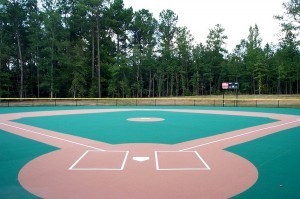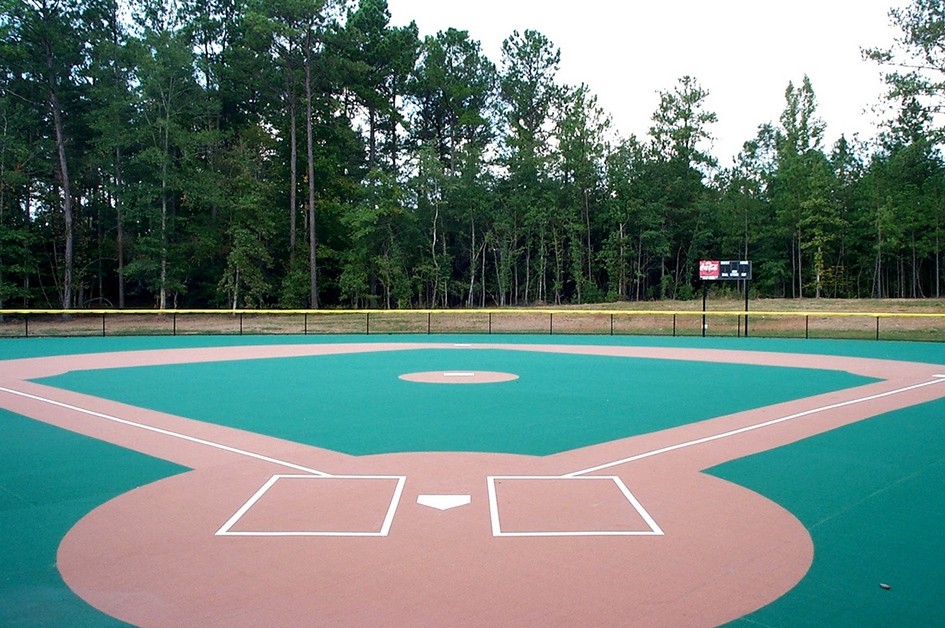- Tahoe’s Nevada Beach Tops the List of Hard-to-Book Campgrounds - 07/17/2024
- Cannabis Watershed Protection Program Cleans Up Illegal Grow Sites - 07/10/2024
- French Fire - 07/05/2024
Dear EarthTalk: Is it true that playing on artificial turf fields can cause cancer? If so, how can I minimize exposure for my sports-loving kids? — Melanie Witmer, Syracuse, NY
Just when you thought it was safe to play soccer on that brand new synthetic turf field, it may be time to think again. Those little black dirt-like granules that fill up the space between synthetic blades of grass and make up some 90 percent of today’s artificial turf fields are actually ground-up car and truck tires. As such they contain a host of potentially noxious chemicals that can lead to a wide range of health problems.

Four of the constituent chemicals in the “tire crumbs” (ground up truck tires) used in artificial turf are deemed carcinogens by the International Agency for Cancer Research. Others have been linked to skin, eye and respiratory irritation, kidney and liver problems, allergic reactions, nervous system disorders and developmental delays. Photo: Tony Bernard, Flickr
Four of the constituent chemicals in these “tire crumbs” (or “tire mulch”) as they are called—arsenic, benzene, cadmium and nickel—are deemed carcinogens by the International Agency for Cancer Research. Others have been linked to skin, eye and respiratory irritation, kidney and liver problems, allergic reactions, nervous systems disorders and developmental delays.
While the risk came to light recently when a University of Washington women’s soccer coach began to think it might be more than a coincidence that two of her goalies were stricken with cancer, researchers have known about such potential links for years. A 2007 report by the Connecticut-based Environment & Human Health Inc. (EHHI) looked at several scientific studies and found definitive connections between various health problems and exposure to synthetic turf.
EHHI also reported that kids on playfields are likely to face similar risks as line workers in the rubber fabrication and reclamation industries, where they say health reports show the presence of multiple volatile organic hydrocarbons and other toxic elements in the air. “Studies at tire reclamation sites report leaching of similar sets of chemicals into the ground water,” says the group.
The Synthetic Turf Council, an industry group, maintains that there is considerable evidence pointing to the health safety of synthetic turf. But the U.S. Environmental Protection Agency (EPA) isn’t taking sides, leaving it up to state and local jurisdictions to decide whether or not to allow artificial turf. The EPA would like to see more research done so parents everywhere can have a better idea of the risks involved.
Of course, synthetic turf fields aren’t all bad. For one, they don’t need frequent watering (a grass playing field typically requires 50,000 gallons of water per week during growing season) and doesn’t require the application of potentially toxic pesticides. Furthermore, turf is much more durable and less costly to maintain than grass, and players suffer fewer injuries on it since it doesn’t turn to slippery mud when wet.
Do these pros outweigh the cons? Some schools don’t think so and are turning back plans to convert their grass fields to turf. Where it is too late for that, parents should warn their little athletes to stay upright as much as possible—turf-related cancers seem to be most common in goalies who spend the most time down on the turf surface. Also, the Centers for Disease Control and Prevention (CDC) recommends that those playing on synthetic turf avoid eating or drinking on the field where toxic dust can contaminate food and liquids, wash their hands and body aggressively with soap and water afterwards, and remove clothes worn on the field and turn them inside out before washing them separately from other items.
CONTACTS: International Agency for Cancer Research, www.iarc.fr; EHHI, www.ehhi.org; Synthetic Turf Council, www.syntheticturfcouncil.org; CDC, www.cdc.gov.
EarthTalk® is written and edited by Roddy Scheer and Doug Moss and is a registered trademark of E – The Environmental Magazine (www.emagazine.com). Send questions to: earthtalk@emagazine.com.













